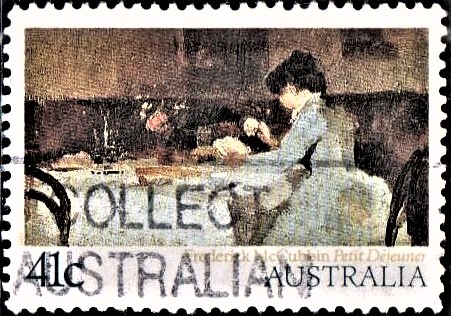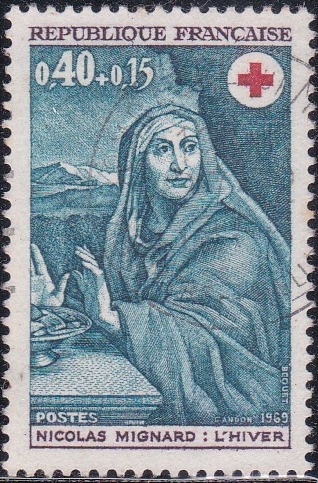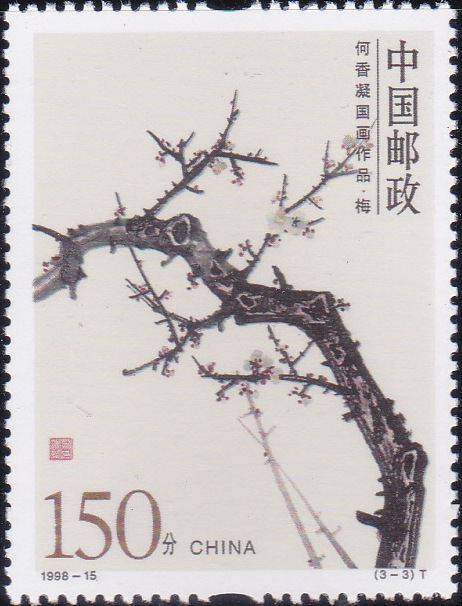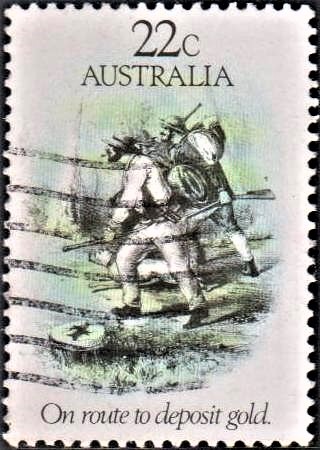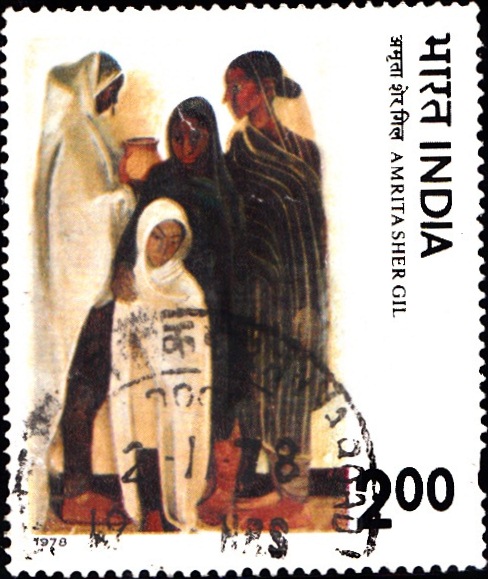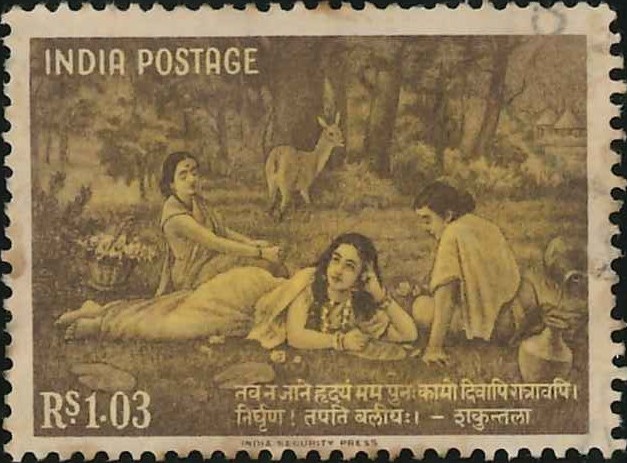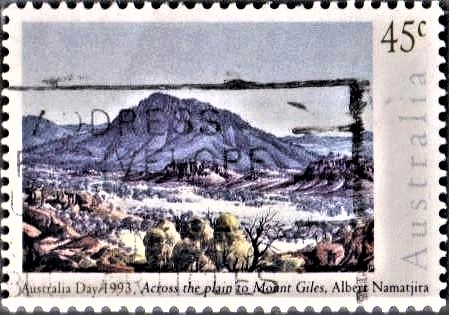
Australia Day 1993
Complete Set of 2 nos of commemorative postage stamp on the International Year for the World’s Indigenous People : Albert Namatjira and his Watercolor Paintings :
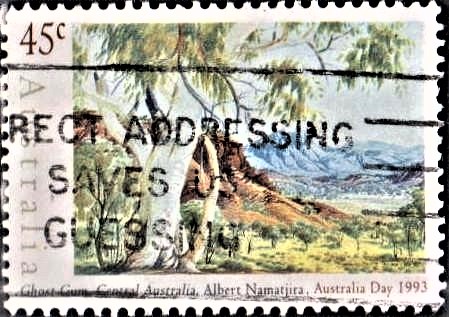
 Issued by Australia
Issued by Australia
Issued on Jan 14, 1993
Designer : Albert Namatjira is one of Australia‘s best-known artists. During his lifetime he painted some 2000 pictures, founding a school of painting that still continues among his relatives and other Aranda people. Two landscapes by Namatjira were reproduced for Australia Day 1993, the International Year for the World’s Indigenous People. Coincidentally, the stamps were issued at the same time as an important exhibition of Hermannsburg art, entitled The Heritage of Namatjira began at the major galleries of Australia. The exhibition is the first serious step of the Hermannsburg watercolour movement and Namatjira as the pioneer artist.
Type : Stamps, Postal Used
Colour : Multi colour
Denomination : 45 cents each
Name : Elea Namatjira
Born on Jul 28, 1902 at Hermannsburg Lutheran Mission, near Alice Springs, Northern Territory, Australia
Died on Aug 8, 1959 at near Alice Springs, Northern Territory, Australia
About :
- Namatjira was born on 28 July 1902 near Hermannsburg Mission. His Aboriginal name was Elea. He attended the mission school, living in the boy’s dormitory, although it appears that he underwent some sort of traditional initiation at the age of thirteen. Albert eloped in 1919 with Ilkalita of the Kukatja people, whose traditional land lay to the west of Aranda country. She was later baptised as Rubina, and the couple had eight children who survived infancy. At the mission Albert took part in craft enterprises designed to help support the mission, as well as working as a blacksmith, stockman and camel driver.
- He was introduced to watercolour painting by Victorian artist, Rex Battarbee. Albert showed a talent and facility for the medium which greatly impressed his teacher. His first one-person show of 41 works was held in 1938 in Melbourne and was a sell-out success. At his first exhibition in Adelaide the following year, the Art Gallery of South Australia purchased a work.
- By 1948 Albert had held nine exhibitions in various capital cities of Australia and he soon became a national celebrity. He was flown to Canberra to meet the Queen; his portrait, by William Dargie, won the Archibald Prize in 1956; and he was made an Associate of the Royal Art Society Gallery in Adelaide. He was enjoying an income of some thousands of pounds per year and in 1957 was granted citizenship.
- Success, fame and money inevitably produced conflicting demands on Albert Namatjira, with tragic consequences. As a citizen, Albert, unlike the rest of his people, had legal access to alcohol. Kinship obligations, however, operated according to different laws and Namatjira was arrested in 1958 for leaving wine where it was accessible to his relatives. He was sentenced to six months imprisonment, and served two months at Papunya. He died just a year later in Alice Springs, aged 57.
- Namatjira‘s life and art must be understood against a context of rapid social change. Albert had been born just fifteen years after the first Christian converts had been baptised. The appropriation of land by pastoralists, the presence of the Mission, the work of Aboriginal converts, the coming of the railway, all were part of a process of great change and upheaval for the Aranda peoples. Drought in the late 1920s created very difficult economic conditions for the Mission and for the increasing numbers of Aboriginal people who were becoming dependent on it. It has been estimated that the Aranda population in 1870 numbered about 2,600. By 1935, only 500 Aranda people remained.
- This tragic loss of population was accompanied by a serious erosion of traditional religious principles. It was in this context of social change and of desperate poverty that Albert Namatjira broke with tradition and began painting in watercolour. In taking this bold step, Namatjira pioneered the way for others.


